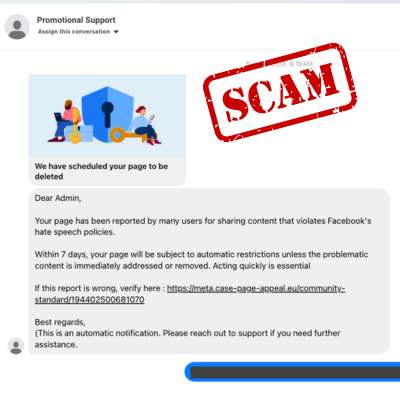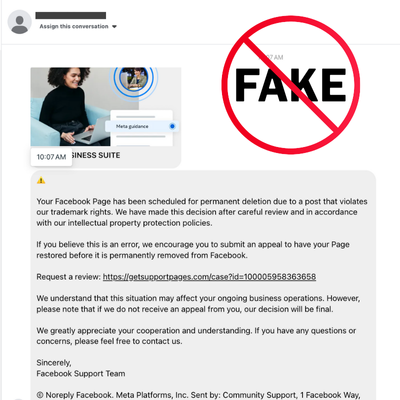Welcome to the digital jungle—a place where opportunities abound but dangers lurk in the shadows. As a business owner, you’re probably well aware of the endless hustle to attract customers, optimize your online presence, and stay ahead of competitors. But amidst this bustling landscape lies a menacing threat that could derail your hard work: spam, bots, and phishing scams. These predators are not just minor nuisances; they are cunning traps set to ensnare the unwary. In this blog post, we’ll arm you with essential strategies to defend your business against these digital threats, ensuring you can navigate this jungle safely.
The Evolving Landscape of Online Threats
While you might be focused on growing your business and competing with others in your industry, it’s equally important to keep an eye on the dangers that could jeopardize your success. Service-based businesses, in particular, are prime targets for scammers who know that smaller operations may have fewer resources to combat these issues.

The Specific Threat of Spam and Bots
What Are Spam and Bots?
Before we get into the nitty-gritty of protection strategies, let’s clarify what we mean by spam and bots.
- Spam refers to unsolicited and often irrelevant messages sent over the internet, typically to advertise or promote something. Think of those annoying emails in your inbox that offer you a miracle product—those are spam!
- Bots, on the other hand, are automated programs that can perform various tasks online. While some bots can be beneficial (like chatbots that help with customer service), others can be harmful. Malicious bots can scrape your website for data, flood your forms with spam, or even engage in click fraud, making them a significant concern for business owners.
Why Are These Threats a Big Deal?
Spam and bots can not only waste your time but also harm your business’s reputation and finances. For example, if your ad clicks are inflated by bots, you’re essentially wasting your marketing budget on fake engagements. This is especially detrimental for service-based companies that rely heavily on online leads to attract new clients.
For more information on various types of scams and how to recognize them, visit the FTC’s Scam Alerts.
The Impact of Click Fraud
Click fraud is particularly problematic for service-based businesses. It involves bots or malicious actors clicking on your ads to deplete your advertising budget without any intention of becoming customers. This can lead to inflated costs, skewed analytics, and a significant drain on resources. Unfortunately, it’s challenging to identify click fraud without robust monitoring. Many business owners only realize they’ve fallen victim to it after their budgets have been drained.
How Spam and Bot Attacks Differ from Common Phishing Scams

While spam and bots are concerning, they often go hand-in-hand with phishing scams. Here’s how they differ:
- Spam generally floods your inbox with unwanted messages, while phishing scams are more targeted. Scammers often disguise themselves as trusted entities (like banks or popular platforms) to trick you into sharing sensitive information.
- Bots might engage in click fraud, affecting your advertising metrics, but phishing scams aim to gain access to your personal accounts and sensitive data.
Mitigation Strategies: How Replock Marketing Protects Your Business
At Replock Marketing, we prioritize honesty, integrity, and transparency. That’s why we take a multi-layered approach to combat spam and bot attacks. Here are some key strategies that can help you safeguard your business:
1. Utilize Advanced Security Tools
We rely on multiple advanced security solutions to mitigate spam and bot activity. Look for software solutions that offer features such as:
- Traffic filtering: Tools that can identify and block suspicious traffic, ensuring that only genuine users interact with your content.
- Bot management: Solutions that differentiate between good bots (like search engine crawlers) and malicious bots, allowing you to keep the helpful ones while blocking harmful activity.
2. Implement Manual Monitoring
In addition to automated tools, manual monitoring is crucial. Regularly review your website analytics and social media accounts for unusual activity. If you notice a sudden spike in clicks or engagement that seems too good to be true, it could be a sign of click fraud.
3. Stay Informed and Educated
Knowledge is power! Stay updated on the latest trends in online scams and phishing tactics. Here are some current scams to be aware of:

- Fake Facebook Account Shutdowns: You might receive a message that looks like it’s from Facebook Support, claiming your account will be suspended unless you click a link. These messages are phishing attempts designed to steal your credentials. Always verify the sender’s email and never click on suspicious links. Scammers often use fear tactics to prompt quick action, tricking you into revealing sensitive information that can lead to account hijacking.
- SEO Scams: Scammers may contact you, pretending to be Google representatives offering to “fix” your search rankings for a fee. Remember, Google does not charge for improving rankings, and any unsolicited offers should raise red flags.

For comprehensive resources on identifying and protecting against phishing attempts, check out the guidelines from the Cybersecurity & Infrastructure Security Agency (CISA).
Read more from our blog: 10 Common SEO Myths Debunked for Real SEO Success in 2024
Best Practices for Business Owners: Safeguarding Your Digital Presence
1. Enable Two-Factor Authentication
One of the simplest yet most effective measures you can take is to enable two-factor authentication (2FA) on all your accounts. This adds an extra layer of security by requiring a second form of verification (like a text message code) in addition to your password. For more on securing your accounts, refer to Google’s guidelines on Preventing Phishing Attacks.
2. Regularly Review Account Activity
Make it a habit to check your account activity regularly. Look for any unauthorized logins or unusual transactions. If you notice something amiss, take immediate action to secure your account.
3. Educate Your Team
Your employees are your first line of defense against online scams. Conduct training sessions to educate your team about phishing tactics and how to recognize suspicious messages. Encourage them to report anything that seems off, fostering a culture of vigilance within your organization.
4. Use Strong, Unique Passwords
Ensure that you use strong and unique passwords for all your accounts. Consider using a password manager to help generate and store complex passwords securely. Remember, weak passwords make it easier for scammers to gain access to your accounts.
5. Don’t Click on Suspicious Links
If you receive an unexpected email or message, be cautious. Don’t click on any links or download attachments unless you’re confident they’re from a trusted source. If you’re unsure, go directly to the website in question by typing the URL into your browser instead of clicking a link.
Recognizing the Signs of a Compromised Account
Being proactive is essential in protecting your business. Here are some signs that your account may have been compromised:
- Unexpected Password Changes: If you notice that your password has changed without your knowledge, act quickly to reset it.
- Unusual Activity: Look out for unauthorized transactions or changes to your account settings.
- Notifications of Logins from Unknown Devices: If you receive alerts about logins from unfamiliar devices or locations, investigate immediately. Scammers can easily hijack accounts, leading to devastating losses, including financial data and access to advertising accounts.
If you spot any of these signs, take action to secure your account and notify your customers if necessary.
Your Shield Against Digital Deceit
Congratulations, you’ve just taken significant steps toward fortifying your business against the relentless tides of spam, bots, and phishing attacks.
With the strategies we’ve discussed, you’re now equipped to face these challenges head-on and protect your hard-earned reputation.
Remember, the digital landscape is ever-evolving, and staying informed is your best defense. As you embark on this journey, keep an eye on the horizon for new scams, and empower your team to be vigilant.
At Replock Marketing, we believe in a future where honesty and transparency reign supreme, creating a safer digital space for everyone. If you want to stay one step ahead, don’t hesitate to reach out for guidance.
Together, let’s create a thriving business landscape where you can focus on what you do best—serving your customers and growing your enterprise.
Read more to enhance your scam-proofing arsenal: Caution! These Online Scams Are Preying on Business Owners in 2024






